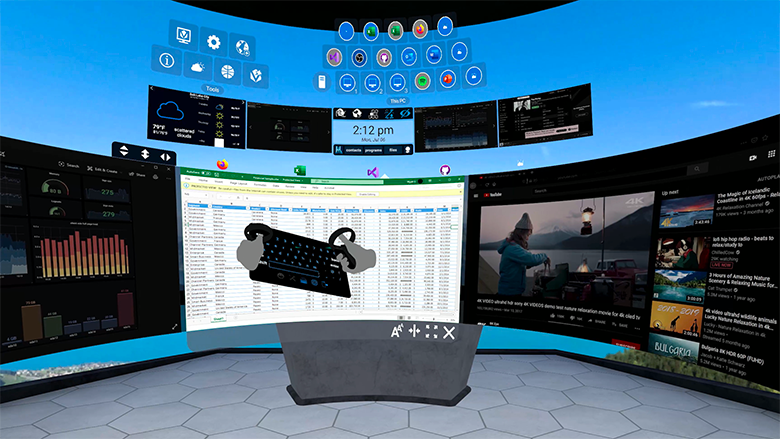August 14, 2020 – Oculus yesterday announced the availability of virtual workspace app, vSpatial, on the Oculus Quest. According to the company, as COVID-19 continues to drive a growing trend around remote work, virtual reality (VR) is one solution that can help transform how people collaborate, as well as help teams be more productive from home.
vSpatial is an immersive workspace that connects users to their computer applications and coworkers using VR, making it possible for all participants in a meeting to easily share multiple applications with each other all at the same time. While Oculus for Business offers unique solutions at scale, Oculus stated that vSpatial fills a gap for consumers by offering a productivity app that lets users surround themselves with unlimited monitors. Features of vSpatial include carousels to help organize work, as well as direct integration with desktop productivity apps including Microsoft Office. Use cases of vSpatial include remote working and remote education.
Whether resizing and pinning apps and windows to improve focus, or taking a break by shooting hoops, users can seamlessly bring their work, as well as their whole team into a workspace, sharing the same view of multiple applications at once. Avatars and spatial audio help users to distinguish teammates in the workspace as they share and draw on select screens.

Talking with Oculus in a blog post, Spatial Founder & CEO Richard B. Platt, commented on the company’s future product roadmap, stating: “Although remote desktop access is a part of the product now, we have a huge upgrade coming very soon that includes internet remote access, virtual machine access, multiple device access, and a much better experience—letting you access your devices from anywhere.” He added, “Teaming functionality is coming very soon, which will redefine how we work remotely as teams. And our Presenting functionality will make virtual business events fun again.”
At the moment, the vSpatial app’s core features hinge on productivity and collaboration. However, the company notes that both ‘Teaming’ and ‘Presenting’ functionality will be coming soon, with the former allowing for: team space rooms, 1:1 ad-hoc meeting functionality, team lounge, and team meeting rooms; and the latter providing auditorium space, presenter tools, participant tools, and auditorium administration.
Platt continued: “While the experience that’s felt within the headset is what ‘sells’ [the vSpatial platform], much of the work and magic happens in the vSpatial Cloud. We’ve discovered that most enterprises, service providers, and institutions of education want to manage their own service. We’re adapting our vSpatial SaaS Cloud for private cloud use, which will include whole new levels of privacy, directory integration, SSO, and customization. We also anticipate that this will be a tremendous opportunity for resellers and integrators.”
vSpatial, which was founded in 2016, has received USD $4.3 million in investment to date. Its platform is now available on Oculus Quest, as well as Oculus Rift/Rift S, HTC Vive, Windows Mixed Reality, and Steam VR. The vSpatial Immersive Workspace also runs as a standard install for Windows 10 and Mac OS. The workplace standard version is available for free, with Pro features starting at USD $10 a month. The company also offers business pricing for enterprise organizations. For more information on vSpatial, please visit the company’s website.
Video / image credit: Oculus / vSpatial
About the author
Sam is the Founder and Managing Editor of Auganix. With a background in research and report writing, he has been covering XR industry news for the past seven years.
